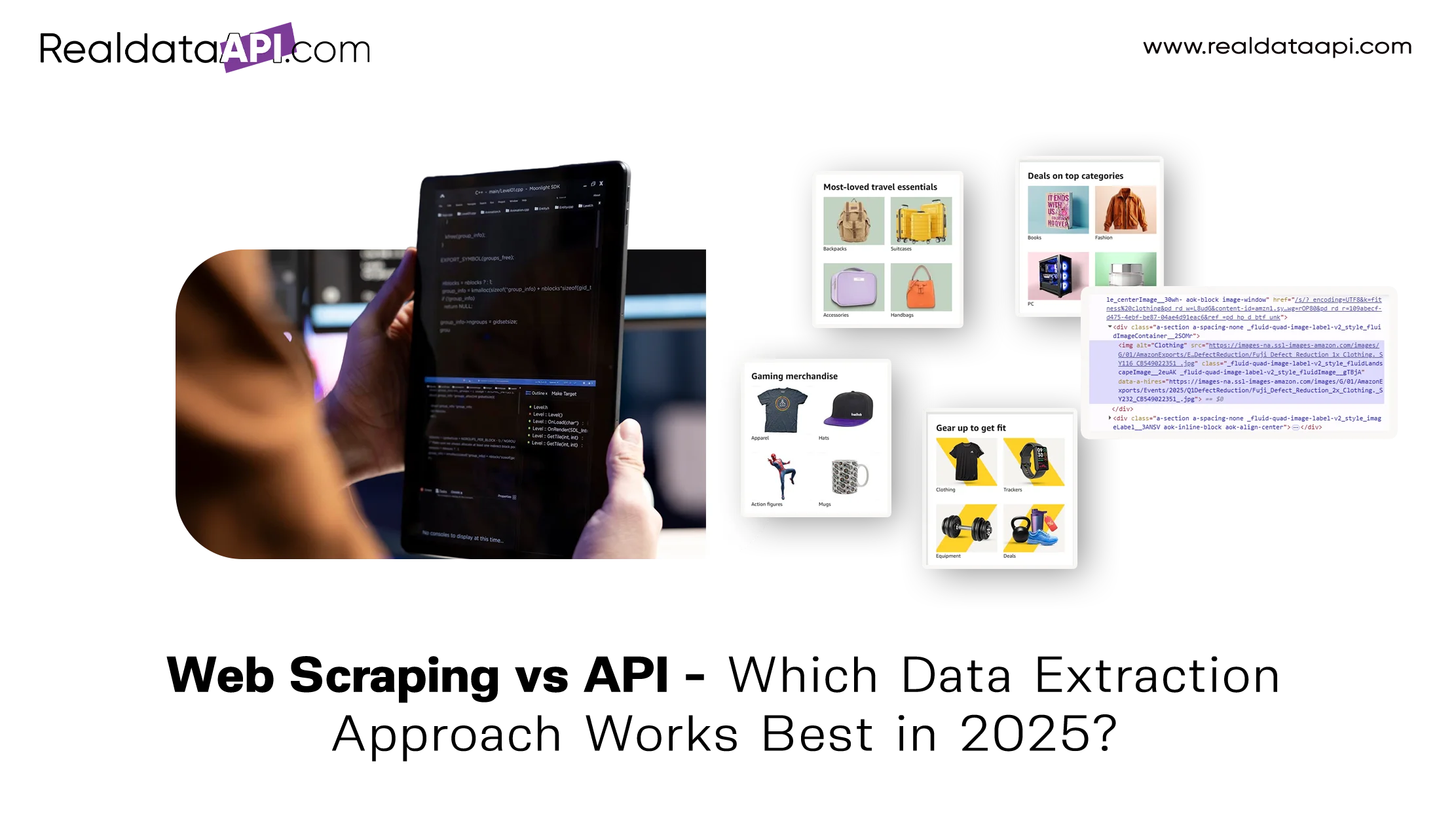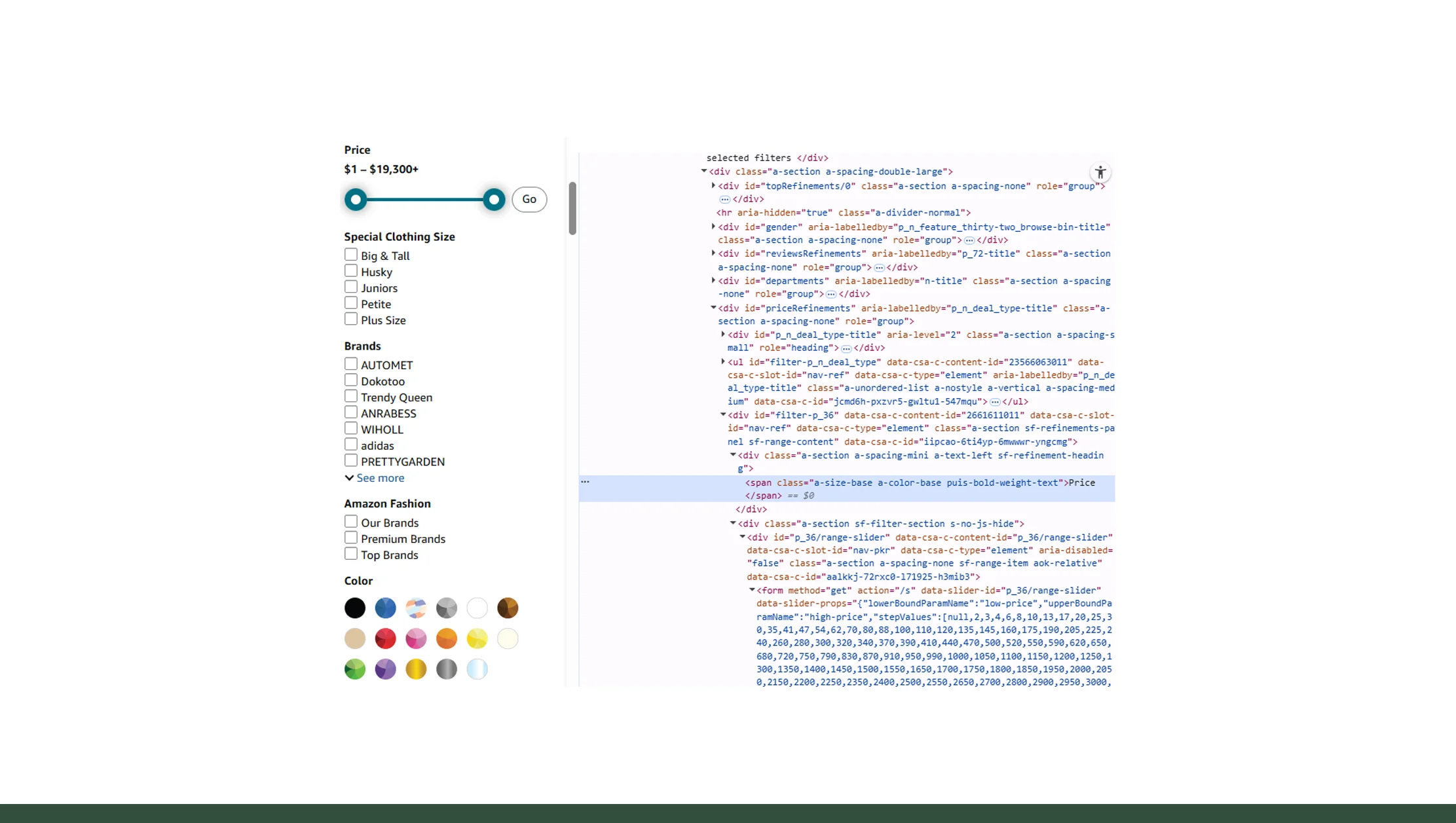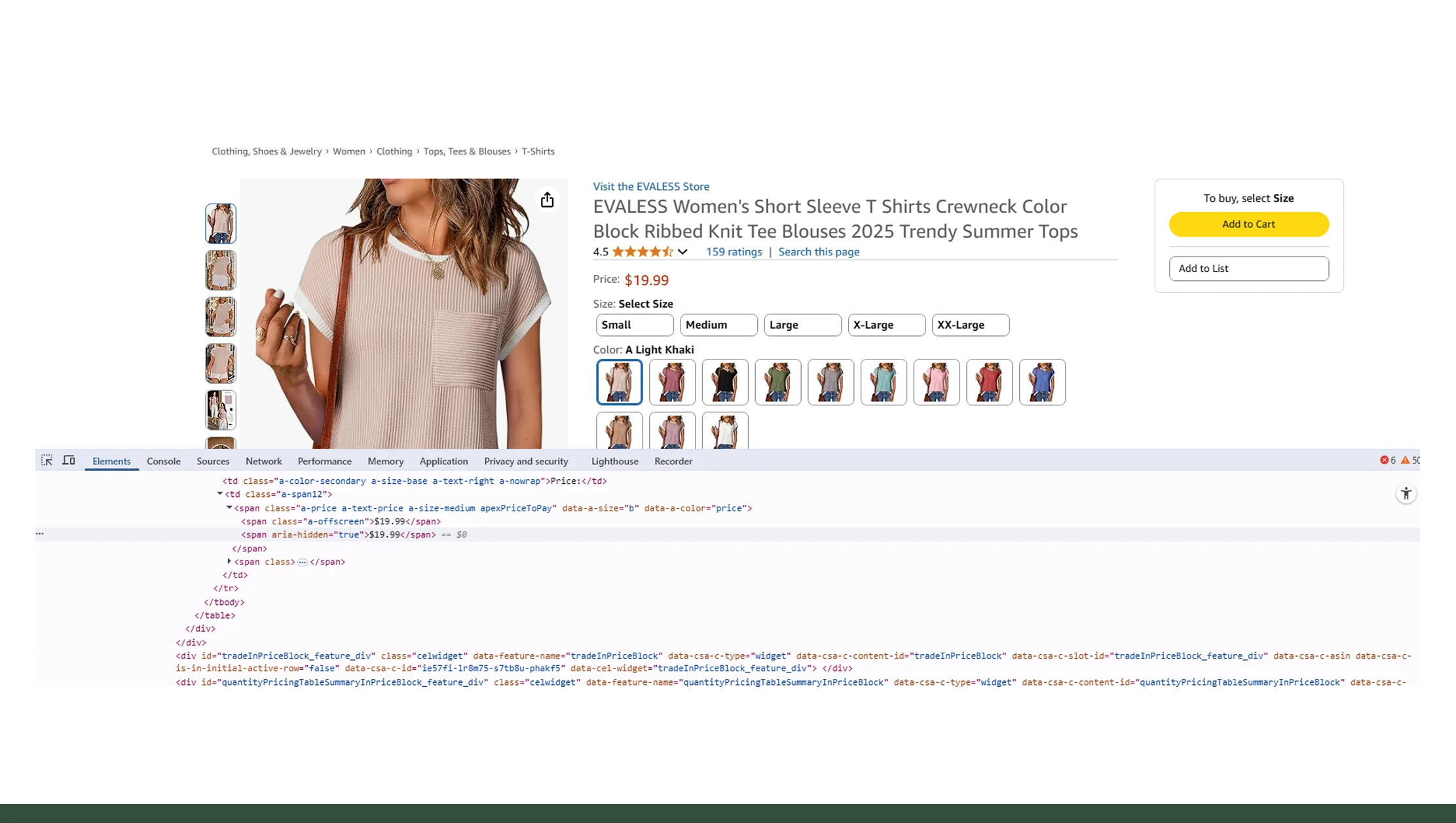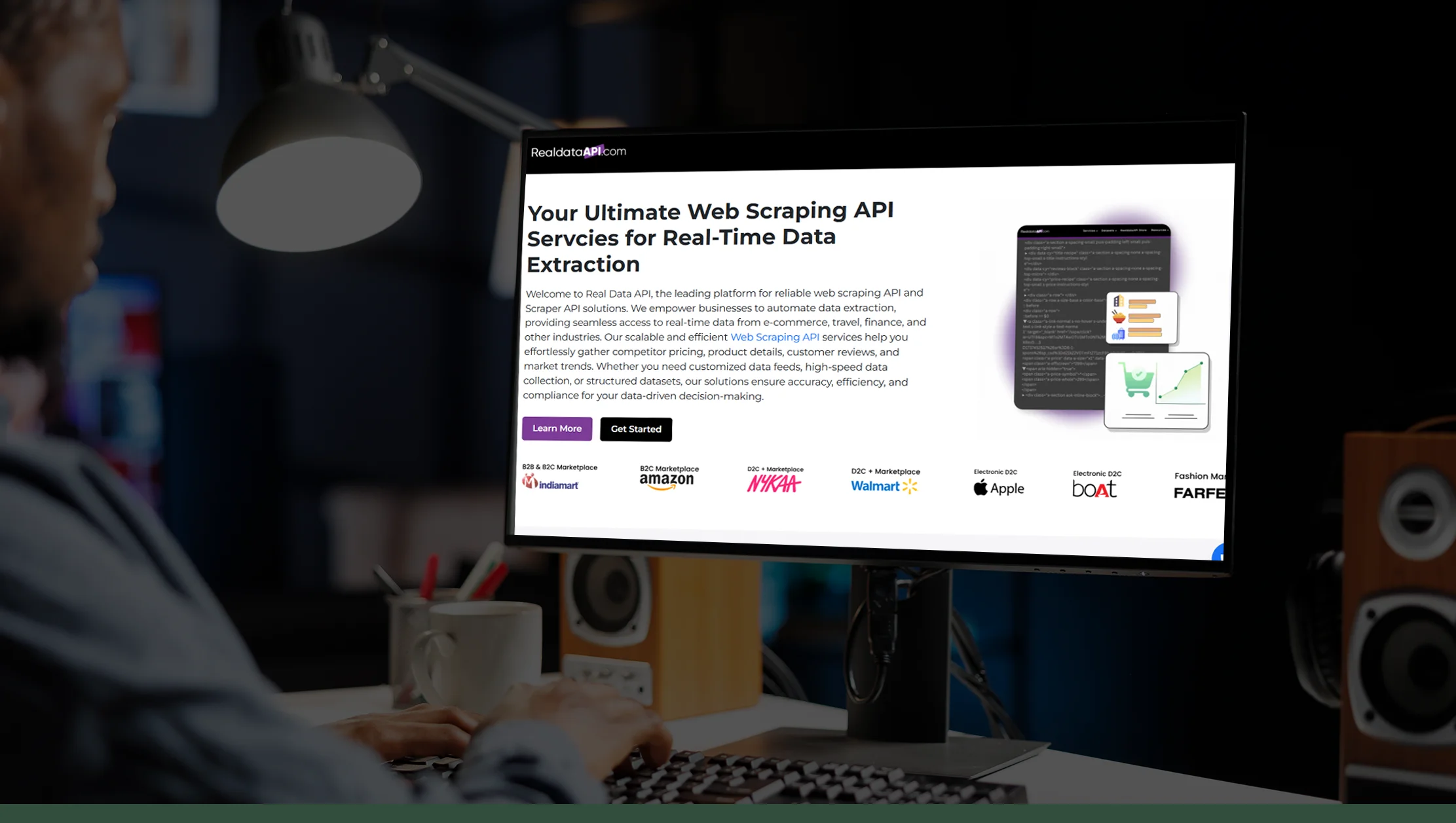

Introduction
In the fast-evolving world of data, businesses in 2025 rely more than ever on efficient and scalable methods to extract relevant information from the web. With digital transformation accelerating across industries, the demand for timely, accurate, and actionable data has skyrocketed. Among the most widely used methods, the debate between web scraping vs API continues to be a focal point for data professionals. Both techniques offer distinct advantages depending on the use case—whether it’s extracting data from dynamic websites or accessing structured datasets via official channels.
According to a 2025 report by DataTech Insights, over 78% of enterprises now use data extraction tools as part of their core operations, with 62% favoring web scraping for broader access, while 38% prefer APIs for structured and reliable integration. As businesses increasingly adopt AI-driven decision-making, selecting the right method can significantly impact performance, cost, and speed. This blog explores the strengths, limitations, and best use cases of each approach.
Understanding Web Scraping and API - The Basics

As businesses continue to integrate data-driven strategies into their operations, understanding the core methods of data extraction becomes essential. Two primary approaches dominate the landscape: web scraping and APIs. While each serves the same end goal—data collection—their methodologies, strengths, and limitations differ significantly.
Web scraping involves extracting data directly from the front-end of websites. This technique parses HTML content, simulates browser behavior, and retrieves data visible to users. It’s especially useful when no official API is available or when businesses need access to public-facing data such as prices, product listings, or customer reviews. Since it mimics human browsing, it offers broader access to data but often requires frequent updates due to website structure changes.
Conversely, an API for web scraping (Application Programming Interface) offers a structured and authorized channel for retrieving data. APIs provide clean, well-formatted information—usually in JSON or XML formats—making integration faster and more reliable. API usage is generally more stable, but it’s limited to what the data provider chooses to expose. For instance, if an e-commerce platform offers an API, it might only include basic product details, while customer ratings or reviews may still require web scraping.
The trade-offs between these methods are clear when comparing performance metrics. According to the Global Data Extraction Trends Report, 2025:
| Method | Estimated 2025 Usage (%) | Average Speed (Requests/Second) | Maintenance Effort (Scale 1–10) |
|---|---|---|---|
| Web Scraping | 62% | 5 | 7 |
| API Access | 38% | 15 | 3 |
These figures highlight that while web scraping offers wider access, it comes with a higher maintenance cost. APIs, though limited in scope, are faster and easier to maintain. Understanding these differences is crucial when deciding which method best suits your data strategy in 2025.
Flexibility & Access - Web Scraping Tools vs API for Web Scraping

When it comes to extracting online data, flexibility and access are two of the most important factors that influence the choice between web scraping vs API. In this regard, web scraping tools clearly lead in versatility. These tools can access any publicly available website content, regardless of whether the site offers a dedicated API. This makes them ideal for gathering data from dynamic pages, third-party listings, reviews, or niche content providers who don’t offer structured interfaces.
Web scraping tools parse HTML code and simulate human interactions with a website, enabling them to capture data that would otherwise be inaccessible. This is especially valuable for applications like competitor monitoring, sentiment analysis, and trend tracking across websites that update frequently or hide data behind user interactions like clicks and scrolls.
On the other hand, an API for web scraping offers a more reliable and structured way to extract data. APIs provide well-defined endpoints that return clean data formats such as JSON or XML. This significantly reduces the time and effort required to clean and structure the data before use. APIs are less prone to breaking due to layout changes on websites, but they come with limitations. You’re restricted to the data points the provider chooses to expose, and access may be limited by quotas, pricing tiers, or usage policies.
Let’s break down the core differences:
| Aspect | Web Scraping Tools | API for Web Scraping |
|---|---|---|
| Data Variety | High (any public site) | Limited to API endpoints |
| Data Structure | Unstructured (HTML parsing) | Structured (JSON, XML) |
| Update Frequency | Depends on scraper updates | Real-time / scheduled |
In short, web scraping tools offer unmatched reach, but API for web scraping delivers stability and efficiency. In 2025, many businesses use a hybrid approach to balance flexibility with reliability, depending on the data source and use case.
Speed & Efficiency - Best Web Scraping API or Custom Web Scraping?

When businesses rely on real-time data to drive decisions—such as tracking market prices, monitoring inventory, or analyzing trends—speed and efficiency become crucial. In the ongoing debate of web scraping vs API, the performance difference is most evident when it comes to how quickly and reliably data can be extracted. Custom web scraping relies on simulating human browsing and parsing HTML content, which is inherently slower. Scraping a single page might take 10 to 30 seconds depending on network conditions, site complexity, and rate-limiting restrictions. Moreover, if a website changes its layout, the scraper may fail, causing delays until the tool is updated. These interruptions are especially problematic for large-scale operations or real-time data monitoring.
In contrast, the best web scraping API is built on highly optimized, cloud-based infrastructure that supports rapid, scalable data retrieval. APIs use structured requests and return responses in formats like JSON or XML, significantly reducing processing time. An API can retrieve large amounts of data in under 5 seconds per call, and it typically comes with built-in error handling and retry mechanisms. This ensures minimal data loss and less need for manual intervention.
The performance comparison below highlights the clear advantage of APIs:
| Metric | Web Scraping | Best Web Scraping API |
|---|---|---|
| Data Retrieval Time | 10–30 seconds per page | <5 seconds per API call |
| Error Rate | 15% due to page changes | 2% due to stable endpoints |
| Scalability | Limited by IP & bandwidth | Highly scalable cloud-based |
As of 2025, businesses handling large-scale data projects are increasingly leaning toward web scraping API services for their superior speed, uptime, and automation. When time equals money, the best web scraping API is clearly the faster, more reliable choice.
Reliability & Maintenance: Web Scraping API Services Advantage

In the evolving landscape of data extraction, reliability and maintenance are just as vital as speed or access. While custom page scraping may seem like a powerful solution at first glance, the long-term upkeep can be taxing. As websites update their layout, structure, or security protocols, traditional page scraping software often breaks.
This leads to frequent failures, data inconsistencies, and the constant need for manual updates or debugging.
The fragility of page scraping software stems from its dependency on HTML elements, which are prone to change without notice. This can disrupt business workflows and result in significant downtime, especially for applications that rely on uninterrupted data feeds such as price monitoring, news aggregation, or sentiment analysis.
On the flip side, web scraping API services like Real Data API offer a hands-off, highly reliable alternative. These services abstract the complexities of scraping, structure changes, and proxy rotation. With a robust backend and dedicated support team, they ensure a consistent stream of clean, structured data with minimal user intervention.
Here's a comparative breakdown:
| Factor | Page Scraping Software | Web Scraping API Services |
|---|---|---|
| Downtime Risk | High | Low |
| Maintenance Cost | High | Low |
| Data Accuracy | Variable | Consistent |
By 2025, more than 71% of data-reliant businesses have shifted toward web scraping API services to reduce operational headaches and increase uptime (Source: Data Operations Benchmark 2025). With solutions like Real Data API, you not only eliminate maintenance woes but also gain a dependable partner that evolves with your data needs. For businesses aiming to scale without friction, web scraping APIs deliver both peace of mind and operational efficiency.
Why Choose Real Data API?

Real Data API combines the best of both worlds. It offers robust, scalable web scraping API services that deliver clean, structured data in real-time. Whether you need complex page scraping or seamless API integration, Real Data API ensures your data needs are met with minimal effort and maximum reliability.
Highlights:
- Access to premium data sources without worrying about site changes
- High-speed data extraction with low error rates
- Flexible plans tailored to business needs
- Expert support and seamless integration
Conclusion
Choosing between web scraping vs API depends on your specific needs — flexibility, speed, reliability, and maintenance effort all play a role. In 2025, the trend is clear: businesses increasingly prefer API-driven solutions for efficiency and stability. However, web scraping remains invaluable when APIs aren’t available. For a hassle-free, scalable, and accurate data extraction solution, Real Data API stands out as the trusted partner.
Ready to transform your data strategy? Contact Real Data API today and unlock the power of seamless web data extraction!















